The Upshot
My buddy Ridge and I set out to climb Pico de Orizaba in July 2013 achieving in the process our personal elevation record. But, due to bad weather, slow peace, and some confusion we got lost on the way down and had to camp for the night out in the open and unprepared.
I was really excited to get to climb a mountain of the caliber of Pico de Orizaba. Having climbed Mount Rainier, in Washington state I was ready to kick it up a notch in terms of elevation, reaching over 18,000. The elevation and the need to acclimate made the entire experience for me quite interesting. In the first couple of days I had a pounding headache and shortness of breath even standing still. What was even more interesting was that my heart rate was racing even as I was laying in my sleeping bag. I knew that's a natural response to the thin air that aims to get every little bit of oxygen to the vital organs, but it was scary regardless.
At any rate, at some point on the glacier, we decided to go back because it was getting very late and the clouds beneath us didn't seem very friendly. We didn't want to have to descend in the fog at night. But sure enough we got lost on the way down and by the time it was pitch black, the thought of having to camp out finally dawned on us. Problem is that the summit bid is supposed to be a one day thing, so we had no camping equipment on us in particular a tent or bivy sack.
We literally slept on the frozen ground with absolutely no cover over our heads. We tried as best to create safety conditions, such as laying the backpack on the floor as an insulating layer, wearing a parka and hard shell, and using something as a pillow. Beyond that, it was literally snowing on top of us. As I lied down I anticipated doing no more than teetering in and out of sleep and just sort of waiting it out till sunrise. But, I was surprised that I passed out completely for a few hours.
Once we got up, around 6 am we spot the hut from our location. It turned out that we were actually very close to it and had we continued a little more we would have reached it, but who knew. We even had a hard time believing that what we were seeing was actually the hut, because we weren't sure we had descended the right way. Then Ridge zooms in to take a picture of the structure and we zoom into the picture a little more to inspect it. I was really relieved to realize that it was indeed our hut and even more so to see that there was a truck parked right outside.
Getting There
Transportation
![Dining Room at Hostel]() Dining room at hostel
Dining room at hostel- Upon arriving at the airport in Mexico City, take a taxi cab to TAPO bust station. The cab fare is cheap and it is not worth taking a public bus to the bus terminal.
- At TAPO bus terminal, purchase a ticket for Puebla. I don't recall which bus line we used, but I know that there are several of them that service Mexico City and Puebla. The fare is pretty cheap, we're talking a couple of bucks.
- Upon arriving at the bust terminal in Puebla, get to the ticket kiosk and purchase a bus ticket for Tlachichuca. Again, I don't recall which bus line serviced that rout but it was one of the major ones.
- Each leg of the trip is a two hour ride.
In Tlachichuca
- There are two lodging choices in the city, we used Mr. Gerardo Reyes and we were quite satisfied with them.
![Gear check]() Gear Check
Gear Check- Mr. Reyes owns a former soap factory which is located close to the bus station.
- As soon as you exit the bus station and you face the town's main square, go left. Walk for just a few blocks until you get to the only gas station in town. There, make another left. In the center of the block you'll see signs for "Servimont". Knock the door and you'll be let in.
- Alternatively, just ask anyone in town "donde esta la casa de senor Reyes/Servimont". It's a small town and everyone knows everyone else.
- Servimont offers guided climbs as well as minor camping equipment. We rented from them fuel, two large bottles of water and we got a truck ride to base camp
- more info on http://www.servimont.com.mx/
- There is zero red tape to climb Pico de Orizaba...it's just your and the mountain!
The Climb
![Piedra Grande Hut]() This is the hut called Piedra Grande at about 14,000', and that is the kind of weather that awaited us upon arrival.
This is the hut called Piedra Grande at about 14,000', and that is the kind of weather that awaited us upon arrival. Day 1
- The truck ride took about two hours from Tlachichuca to base camp "Piedra Grande" and it went through treacherous terrain.
- left at noon, and got to Piedra Grande in the early afternoon.
- There was no one in the mountain because July is wet season and not ideal for climbing.
- Temperature-wise it was not clod, but it rained the entire time we were on the mountain. (snow at higher elevations)
- The hut on Piedra Grande has lots of space over three rows of bunk beds.
- Ensure that your food is packed well because there are mice running around. You never see them during the day but you can hear them at night.
- Piedra Grande elevation is approximately, 14,000 feet and you can start to feel the effects of elevation. "drink a lot of fluids"
![At base camp]() At basecamp setting up a tent. In the end we never used it.
At basecamp setting up a tent. In the end we never used it.Day 2
- Day 2 is typically uses for an acclimation hike
- We hiked to about 16,000 feet
- Some climbers try to hike right at the base of the glacier, which is not a bad idea at all since it allows you to really familiarize with the trail. Remember, summit day is going to be an alpine start so knowing your way around helps.
- However high you go on your acclimation hike, use it to familiarize well with the trail. Slow down, look around you and make mental notes of landmarks.
Day 3 - Summit Day
- Alpine start at midnight.
- Everything was covered in snow the morning of the summit day and it was hard to see which way the trail went.
- There is hardly a trail really. It's more like a maze (hence the name Labyrinth) and you can go whichever way, just as long as you follow the canyon that funnels up to the sarcophagus (a smaller peak at the base of the glacier - see pics for reference)
- Also remember that the general direction of the trail to the summit is almost exactly north/south direction.
- Peace yourself in a way that gets you on the glacier before sunrise.
- Once you descend Mr. Reyes will pick you up upon having arranged round trip transportation.
![Labyrinth]()
Catching the first glimpse of the summit from the Labyrinth
![Pico de Orizaba]()
Just reached the base of the glacier in the early hours. The going was very rough up to here due to virtually zero visibility. Rainy season is not the ideal time to climb Orizaba!
![The Sarcophagus]() The rocky formation on the right of the picture is called "the sarcophagus" and it's a very important landmark right at the base of the glacier (on the left of pic). As long as you stay just east of the sarcophagus on your way up or down, you'll know you're on the right path.
The rocky formation on the right of the picture is called "the sarcophagus" and it's a very important landmark right at the base of the glacier (on the left of pic). As long as you stay just east of the sarcophagus on your way up or down, you'll know you're on the right path.
![Pico de Orizaba]() Making our way up the glacier
Making our way up the glacier
![Pico de Orizaba]()
Rainy season on the top of Orizaba means having to plow through fresh snow.
Recommendations
For anyone planning on climbing Pico de Orizaba I say make sure you do so during the dry season. In Mexico the dry season is anytime between November and March, basically winter. If you do decide to go in the summer expect lots of rain and fog, rendering visibility virtually non-existent while you climb. In that case I recommend you spend the extra $300 dollars or whatever the rate is to hire a guide. The guide knows the route by heart and visibility or not, he will save you a ton of time and peace you the right way.
I suppose one positive thing about climbing Pico during rainy season is that there is no one else on the mountain. I mean really no one else! As a matter of fact Ridge and I were the only two people on that three day period. Another positive thing is that past a certain elevation, the clouds will be for the most part below you and you might get some sun on your way up.
The last recommendation is that Pico is a fantastic place for high altitude training especially if you've never venture over 18,000' before .What's even more exciting is that the location is super accessible and cheap, at least if you're coming from the US.


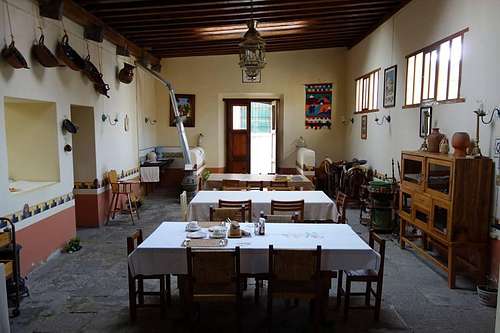


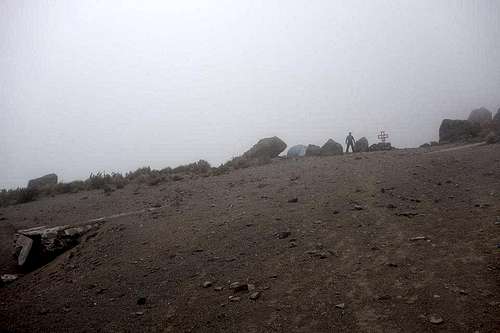
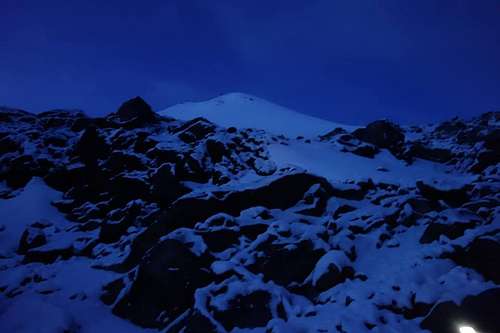
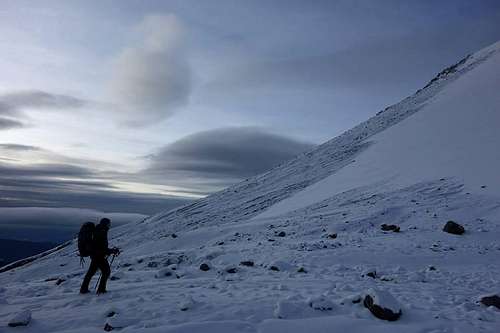

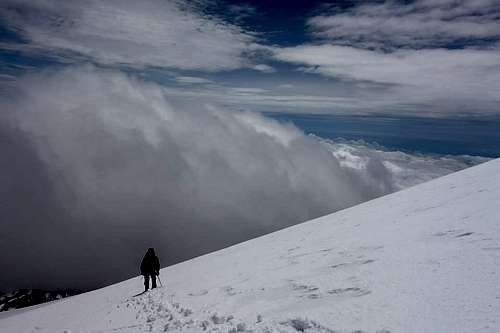
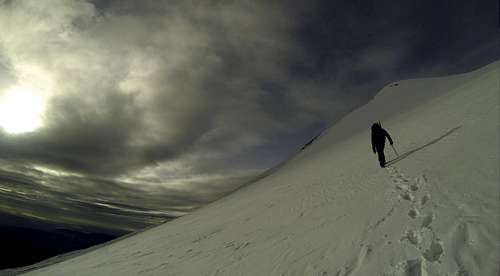



Comments
Post a Comment